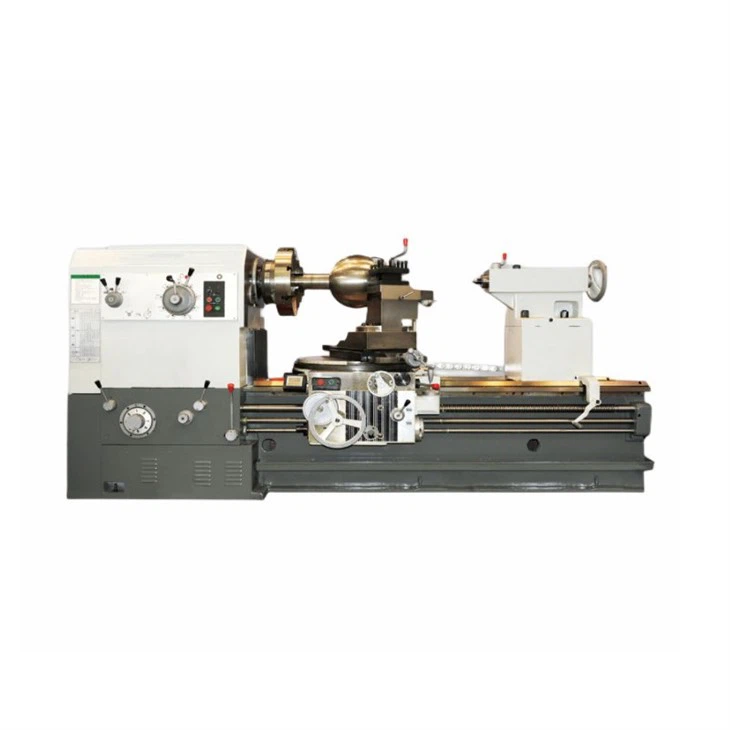Hey there! As a supplier of Spherical Turning Lathes, I often get asked if these machines can be used in conjunction with other machining equipment. Well, the short answer is yes, and in this blog, I'm gonna dive deep into how and why it makes a lot of sense.
Let's start by understanding what a spherical turning lathe is. A spherical turning lathe, also known as a Spherical Lathe, is a specialized piece of equipment designed to create spherical or near - spherical shapes on workpieces. It's great for making balls, spherical joints, and other rounded components with high precision.
Now, why would you want to use it with other machining equipment? One of the main reasons is to increase the overall efficiency and versatility of your machining operations. For example, a spherical turning lathe might be really good at creating the basic spherical shape, but before that, you might need to do some rough cutting and shaping of the raw material. That's where a regular milling machine can come in handy. You can use the milling machine to cut the workpiece to a close approximation of the desired size and shape, removing a large amount of material quickly. Then, you transfer the workpiece to the Spherical Turning Lathe Machine for the final, precise spherical finishing.
Another common combination is with a grinding machine. After the spherical turning lathe has done its job, there might be some minor surface imperfections or a need for an even smoother finish. A grinding machine can be used to achieve that super - smooth surface finish that is often required in high - precision applications. The spherical turning lathe gets you the right shape, and the grinding machine refines the surface quality.
Let's talk about a real - world scenario. Suppose you're manufacturing ball bearings. First, you use a saw or a cutting machine to cut the raw metal rods into appropriate lengths. Then, a milling machine can be used to rough out the general shape of the ball. Once that's done, you put the semi - finished piece on a Ball Turning Lathe. The ball turning lathe will then turn the workpiece into a perfect sphere with the required diameter. After that, a grinding machine can be used to polish the surface of the ball bearing, reducing friction and increasing its lifespan.
There are also some technical benefits to using a spherical turning lathe in combination with other equipment. Different machines have different levels of accuracy and repeatability. By using a combination of machines, you can play to the strengths of each one. For example, a large - scale lathe might be great for rough turning, but it might not have the same level of precision as a smaller, more specialized spherical turning lathe. So, you use the large lathe for the initial work and the spherical turning lathe for the final, high - precision operation.
In terms of workflow, it's important to plan out how the different machines will work together. You need to make sure that the workpieces can be easily transferred between machines without causing any damage or misalignment. This might involve using proper fixtures and jigs to hold the workpieces securely during each operation. Also, you need to consider the order of operations carefully. For example, if you do too much finishing work on a workpiece before it's properly shaped on the spherical turning lathe, you might end up wasting time and materials.
When it comes to programming and control, modern machining equipment is often highly automated. You can integrate the programming of different machines so that the transition between operations is seamless. For example, you can use computer - aided manufacturing (CAM) software to generate the tool paths for both the milling machine and the spherical turning lathe. This way, you can ensure that the dimensions and tolerances are consistent across all operations.


However, there are also some challenges to using a spherical turning lathe in combination with other equipment. One of the main challenges is the cost. Buying and maintaining multiple pieces of machining equipment can be expensive. You need to consider not only the initial purchase cost but also the cost of training your operators to use all the machines effectively. Another challenge is the space requirement. You need to have enough floor space in your workshop to accommodate all the machines and allow for easy movement of workpieces between them.
Despite these challenges, the benefits often outweigh the drawbacks. By using a spherical turning lathe in conjunction with other machining equipment, you can expand your production capabilities, increase the quality of your products, and take on more complex projects. You can offer a wider range of services to your customers, which can give you a competitive edge in the market.
If you're in the market for a spherical turning lathe or are considering integrating it with your existing machining setup, I'd love to have a chat with you. Whether you're a small - scale workshop or a large - scale manufacturing plant, we can help you find the right solution for your needs. Contact us to discuss your requirements and let's see how we can work together to take your machining operations to the next level.
References
- Machining Handbook: A comprehensive guide to machining processes and equipment.
- Modern Manufacturing Technology Journal: Articles on the latest trends and techniques in machining.
